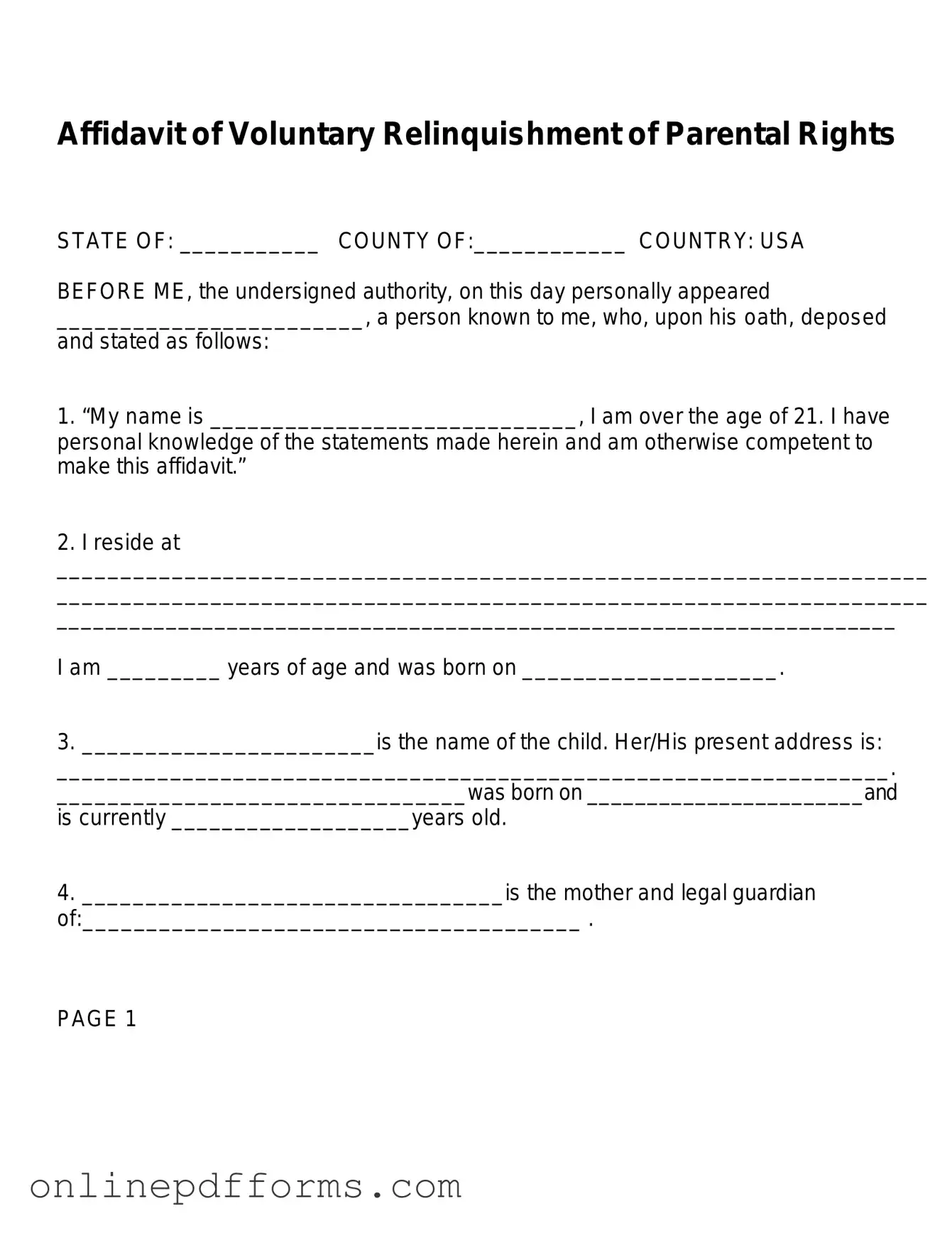The Affidavit of Voluntary Relinquishment of Parental Rights shares similarities with a Consent to Adoption form. Both documents are used in situations where a parent is choosing to give up their parental rights, often in the context of adoption. The Consent to Adoption explicitly states that the parent agrees to the adoption of their child by another party, making it clear that they no longer wish to maintain their parental relationship. This form also typically requires the parent to acknowledge their understanding of the implications of this decision, much like the affidavit does.
Another document akin to the Affidavit of Voluntary Relinquishment is the Termination of Parental Rights petition. This legal document is filed in court to formally end a parent's rights over their child. While the affidavit is a declaration made by the parent, the petition is a request to the court to recognize this relinquishment. Both documents emphasize the seriousness of the decision and often require the parent to provide reasons for their choice, ensuring that the child's best interests are considered.
The Power of Attorney for Minor Children is also similar in nature. This document allows a parent to designate another individual to make decisions on behalf of their child. While it does not terminate parental rights, it does shift certain responsibilities and authority to another party. Both the Power of Attorney and the Affidavit of Voluntary Relinquishment involve a parent making a significant decision regarding their child's future, reflecting a desire to ensure the child's well-being.
Additionally, the Child Custody Agreement bears resemblance to the Affidavit of Voluntary Relinquishment. This agreement outlines the terms of custody between parents or guardians, often after a separation or divorce. While it does not relinquish parental rights, it does define the roles and responsibilities of each parent. Both documents require careful consideration of the child's best interests and can lead to significant changes in a parent's relationship with their child.
The Parental Rights Waiver is another document that aligns closely with the Affidavit of Voluntary Relinquishment. This waiver allows a parent to forfeit certain rights, often in specific situations like foster care or temporary guardianship. Like the affidavit, it requires the parent to acknowledge their understanding of the rights they are giving up and the implications of that choice. Both documents serve to protect the child's welfare while clearly outlining the parent's intentions.
When navigating the sale of a motorcycle, the use of appropriate documentation is paramount. The Arkansas Motorcycle Bill of Sale form is essential in this transaction, serving as a legal record and assuring both parties of their rights and responsibilities. To obtain the necessary documentation, you can find the relevant Vehicle Bill of Sale Forms that simplify the process and ensure a smooth transfer of ownership.
Lastly, the Court Order for Termination of Parental Rights is similar in that it is a formal legal process that results in the severing of parental rights. Unlike the affidavit, which is initiated by the parent, this order is a decision made by a judge. Both documents reflect a significant legal acknowledgment of the parent's choice to end their relationship with their child, emphasizing the importance of considering the child's best interests in these decisions.
